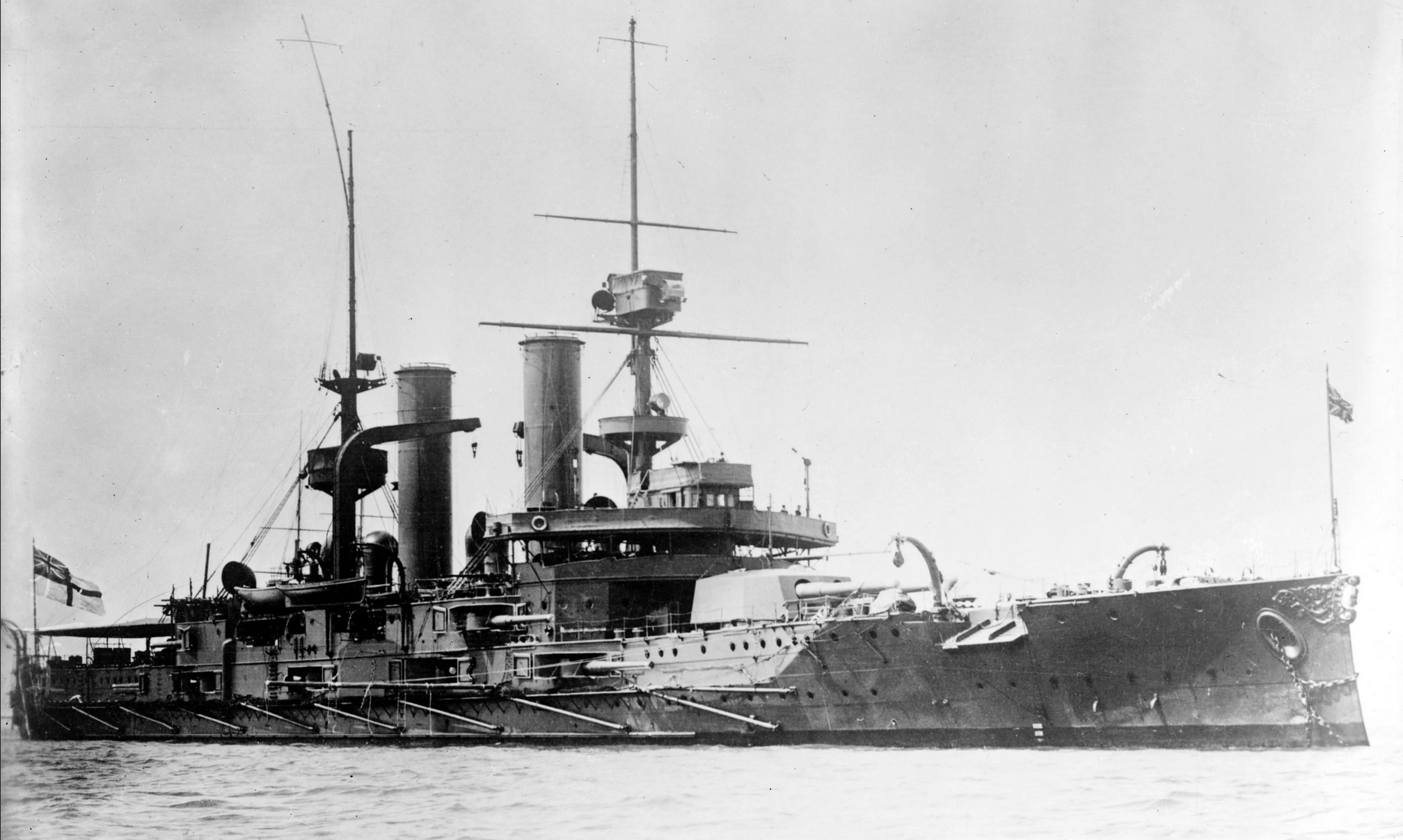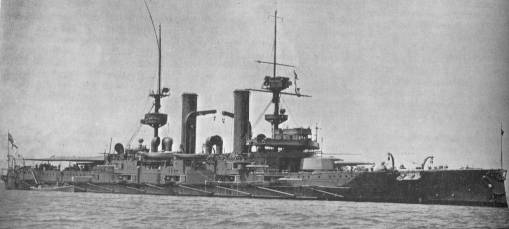These guns were mounted on two Coastal Defense vessels intended for the Chilean Navy, who named them as Constitution and Libertad. The British took these ships over in 1906 to prevent their purchase by another European power and then renamed them as HMS Swiftsure and HMS Triumph.
The Chileans had chosen this caliber because the size and weight of the 10" (25.4 cm) ammunition allowed for a much simpler and more efficient ammunition supply system than was the case with the contemporary British 12" (30.5 cm) mountings. Neither the guns nor the mountings on these ships were identical to each other, a somewhat unusual affair in what were supposedly sister-ships, but explained by the fact that the Mark VI was built by Elswick while the Mark VII was manufactured by Vickers.
Both Marks were of wire wound construction and the principal difference between the two was that the Mark VI had a cylindrical breech screw with four interruptions and unlocked after rotating 45 degrees while the Mark VII used a conventional Welin breech block with Vickers hydraulic or hand operation. A total of five guns of each mark were constructed.
After Swiftsure was disarmed in the latter part of World War I, it was planned to reline the five guns to 9.2"(23.4 cm) and use them for railway artillery, but this conversion was never completed. After Triumph was sunk, the Navy planned to similarly reline her spare gun to 9.2" (23.4 cm), but this also does not appear to have been completed.
Nomenclature note. The 10"/40 (25.4 cm) Mark VIII designation was given to four 13.5" Mark III or Mark IIIF guns in the battleship Revenge which were relined to 10" (25.4 cm) for training purposes. The front of the chase was reduced in diameter to reduce the muzzle-heavy finished design.
| Designation | 10"/45 (25.4 cm) Mark VI Elswick Pattern "S"
10"/45 (25.4 cm) Mark VII Vickers Pattern "A" |
|---|---|
| Ship Class Used On | Swiftsure: Mark VI
Triumph: Mark VII |
| Date Of Design | about 1901 |
| Date In Service | 1904 |
| Gun Weight | Mark VI: 39 tons (40 mt)
Mark VII: 31 tons (31.5 mt) |
| Gun Length oa | Mark VI: 467.6 in (11.877 m)
Mark VII: 462.8 in (11.755 m) |
| Bore Length | 450 in (17.717 m) |
| Rifling Length | N/A |
| Grooves | N/A |
| Lands | N/A |
| Twist | N/A |
| Chamber Volume | 9,720 in3 (159.3 dm3) |
| Rate Of Fire | Mark VI: 3 rounds per minute
Mark VII: 2 rounds per minute |
| Type | Bag |
|---|---|
| Projectile Types and Weights | APC - 500 lbs. (227 kg) |
| Bursting Charge | N/A |
| Projectile Length | N/A |
| Propellant Charge | 147 lbs. (66.7 kg) MD 45 |
| Muzzle Velocity | 2,656 fps (810 mps) |
| Working Pressure | N/A |
| Approximate Barrel Life | N/A |
| Ammunition stowage per gun | 86 rounds |
| Designation | Twin Mounts
Swiftsure (2): BIV Triumph (2): BV |
|---|---|
| Weight | N/A |
| Elevation | -3 / +13.5 degrees 1 |
| Elevation Rate | N/A |
| Train | +150 / -150 degrees |
| Train Rate | N/A |
| Gun recoil | N/A |
| Loading Angle | -3 / +5 degrees |
- ^The BIV mounting was limited to 9.75 degrees of elevation unless a hatch door in the gunhouse floor was opened.
- Training, loading and elevation were all of hydraulic operation.
Images at The
Vickers Photographic Archive
See photograph 6800
"British Naval Guns 1880-1945 No 5" article by John Campbell in "Warship Volume VI"
"The Big Gun. Battleship Main Armament 1860-1945" by Peter Hodges
"British Battleships. 1860 - 1950" by Oscar Parkes
---
Special help from Robert Hurst
05 September 2006 - Benchmark
30 January 2009 - Added information about 10" (25.4 cm) Mark VIII guns, information about relining guns for railway artillery
01 December 2015 - Changed Vickers Photographic Archive links to point at Wayback Archive
20 September 2016 - Converted to HTML 5 format
26 January 2022 - Redid photograph of HMS Triumph


